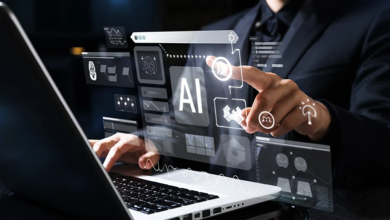How AI Is Changing the Way We Archive and Restore Old Videos

AI is transforming video archiving and restoration through sophisticated algorithms. These technologies enhance visual quality while preserving historical integrity. Advanced machine learning techniques enable precise frame interpolation, addressing gaps in footage. Noise reduction methods further minimize artifacts, ensuring authenticity. As automated processes for color correction and brightness adjustments become standard, the implications for cultural heritage preservation and accessibility warrant closer examination. What challenges and opportunities lie ahead in this evolving landscape?
The Evolution of Video Restoration Techniques
The evolution of video restoration techniques has significantly transformed the preservation and accessibility of archival footage.
Initially reliant on analog techniques, restorers faced limitations in quality and efficiency.
However, digital innovation has enabled the application of advanced algorithms, enhancing image clarity and color fidelity.
This shift not only safeguards historical content but also democratizes access, granting broader audiences the ability to engage with preserved media.
How AI Algorithms Enhance Visual Quality
As technology continues to advance, AI algorithms play a pivotal role in enhancing visual quality during the restoration of archival videos.
These algorithms utilize sophisticated image enhancement techniques, allowing for the meticulous adjustment of contrast and brightness.
Additionally, color correction processes are automated, enabling the revival of faded hues and ensuring a more authentic representation of the original footage, ultimately enriching the viewing experience.
The Role of Machine Learning in Frame Repair
Employing machine learning techniques has revolutionized the process of frame repair in archival video restoration.
Advanced algorithms enable frame interpolation, filling in missing data with remarkable accuracy.
Additionally, noise reduction methods improve overall visual quality by minimizing artifacts.
These innovative approaches not only enhance the restoration process but also preserve the authenticity of the original content, offering a new level of freedom in video archiving.
Future Prospects for Video Archiving and Preservation
While advancements in technology continue to shape the landscape of video archiving, the future prospects for preservation hinge on integrating emerging tools and methodologies that enhance both accessibility and longevity.
Innovations in archival technology promise improved digital preservation techniques, enabling the safeguarding of diverse video formats.
Furthermore, fostering collaboration among institutions can facilitate resource sharing, ensuring a more comprehensive approach to preserving cultural heritage.
Also read: How AI Is Changing the Landscape of Ecommerce Product Videos
Conclusion
In an era where AI wields the power to resurrect the lost treasures of visual history, the once tedious task of video restoration transforms into an art form reminiscent of digital alchemy. With unparalleled precision, algorithms breathe life into faded memories, crafting a viewing experience that promises to captivate even the most indifferent observer. As these innovations continue to evolve, the prospect of preserving humanity’s collective narrative becomes not just a possibility, but an impending reality of unparalleled significance.





